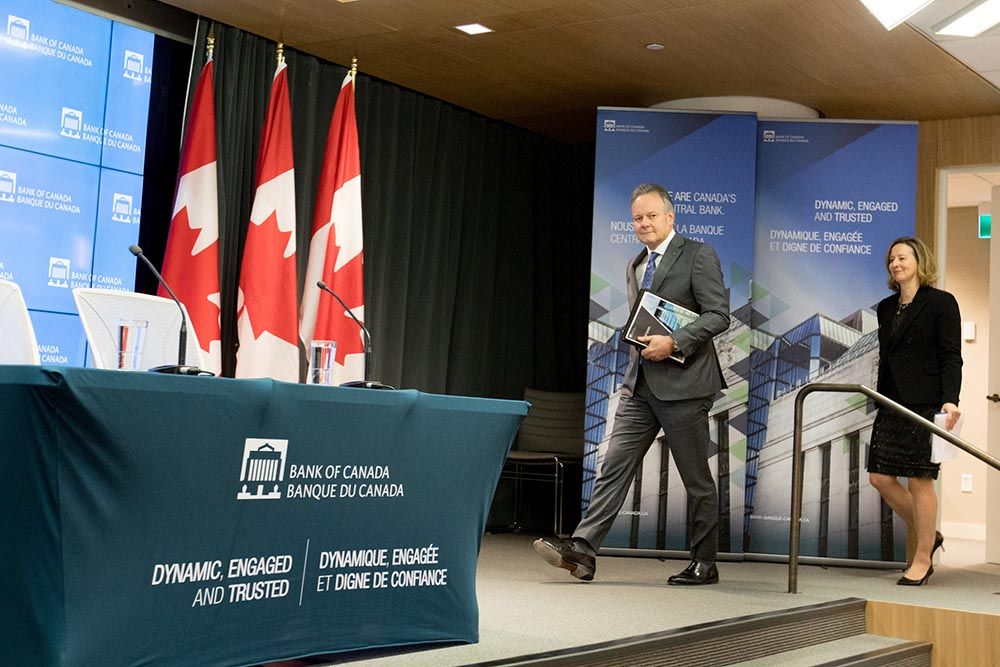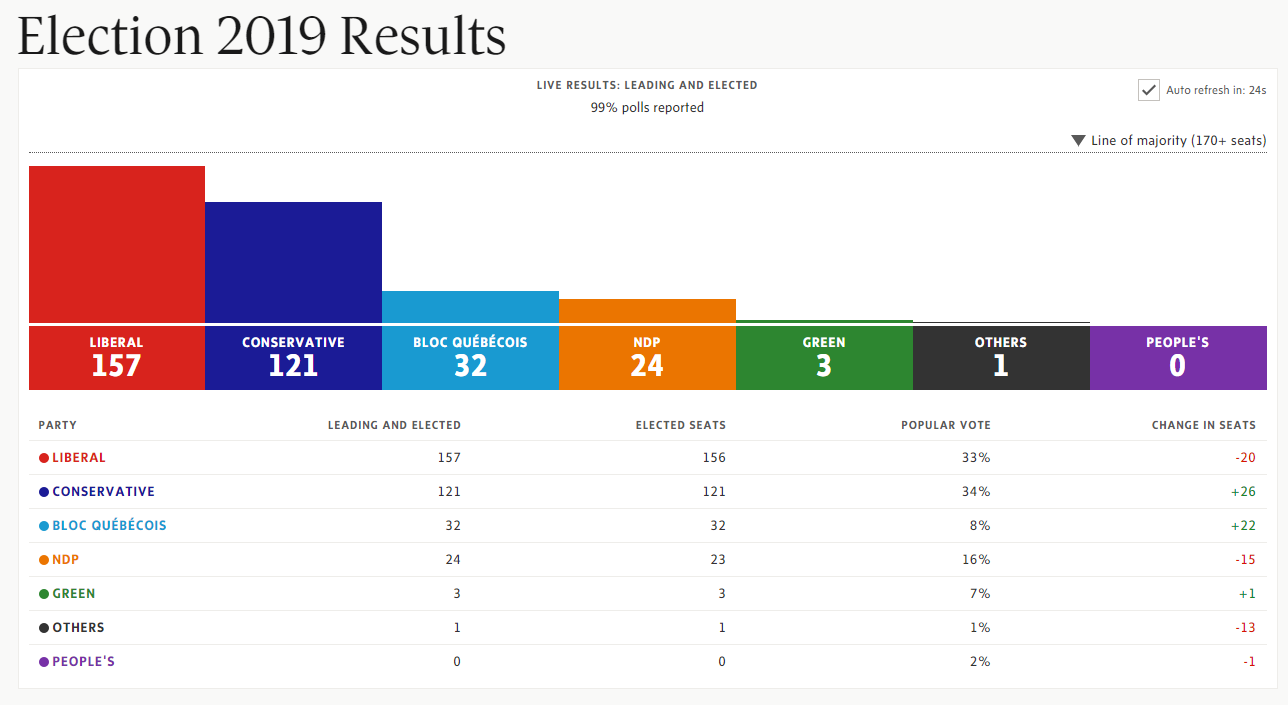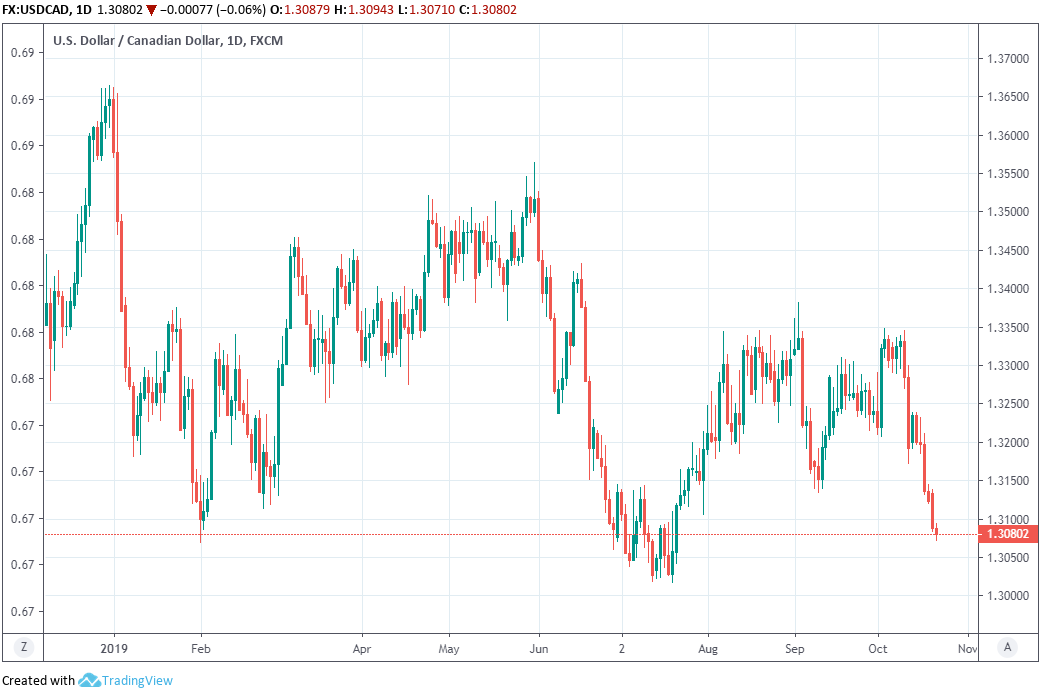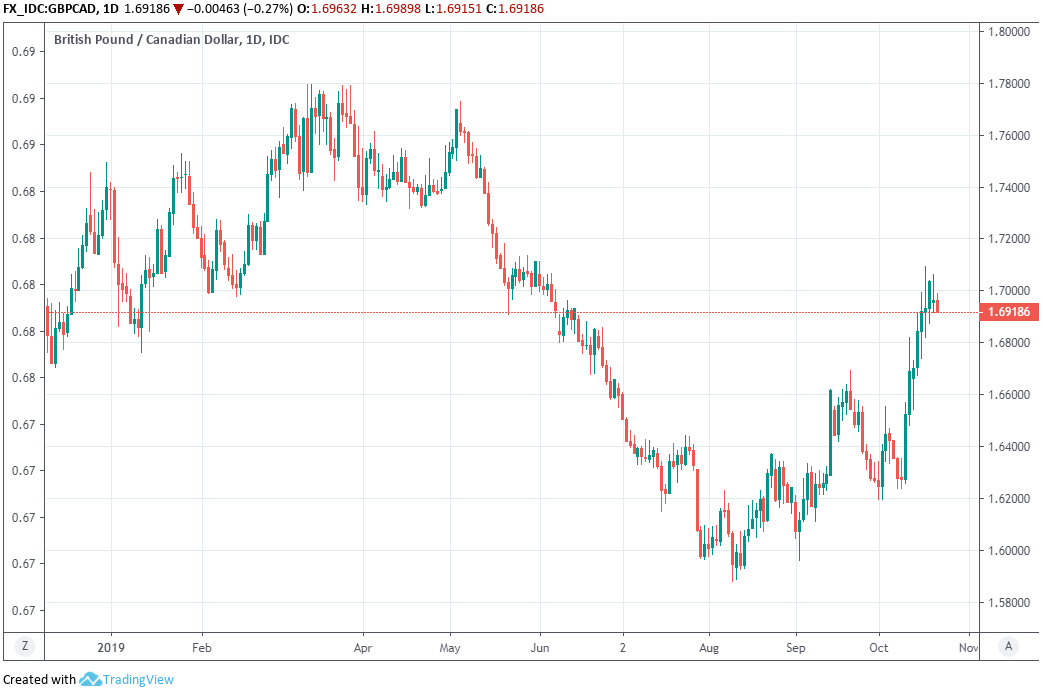The Canadian Dollar Eyes BoC Survey and Economic Figures after Trudeau Clings On in Election
- Written by: James Skinner

Image © Bank of Canada, Reproduced Under CC Licensing
- PM Truduea loses majority but clings to power in election.
- CAD now turning eyes to retail sales figures and BoS survey.
- BoC survey to provide clues on outlook for BoC interest rate.
- CAD to remain firm but Brexit news puts floor under GBP/CAD.
The Canadian Dollar was creeping higher again Tuesday following the conclusion of the 2019 general election and is now tipped to take its cues from the Bank of Canada's (BoC) third-quarter Business Outlook Survey and retail sales figures for August, both due in the noon hours.
Prime Minister Justin Trudeau lost his government's majority in Monday's general election but still emerged from the ballot as leader of the largest political party in terms of seat numbers, with the incumbent having secured 157 seats out of the 170 necessary for a majority after 99% of the votes were counted.
Trudeau's Liberal Party lost 20 seats in the vote while opposition leader Andrew Scheer added added 26 seats to his Conservative Party haul and Yves-Fancois Blanchet's Bloc Qeubecois added 22 seats to its share of the parliamentary loot, with both opposition parties ending the ballot on 121 and 32 seats respectively.
The incumbent is now expected to lead a minority government rather than go into coalition with any of his rivals in what could be a negative omen for Canadian politics in the years ahead given a long history of minority governments lasting only a short time in the country. However, it's back to business as usual for the Canadian Dollar, whose feathers were always seen as unlikely to be ruffled by the outcome given similarities in the economic agendas of the two main parties.
"CAD is trading remarkably well, despite Canada's ruling Liberal Party losing its majority in parliament," says Daniel Jakobsson, a spot FX trader at UBS. "The desk prefer to wait until downside momentum in USDCAD subsides before reinstating longs. There has been very limited interest in CAD over the past week, with market participants seemingly waiting for the election to be out of the way. Support at 1.30; resistance at 1.3150 and 1.3240."

Above: Canadian 2019 election outcome. Source: The Globe and Mail.
"Coalition rule is the way of the world now. The FX market is singularly disinterested and the CAD has remained reasonably well supported, reflecting a risk-on, trade-optimistic, news-free market more generally. There's not much concrete news to justify trade optimism, but both US and Chinese officials remain ‘hopeful' and will speak again on Friday," says Kit Juckes, chief FX strategist at Societe Generale.
Both of Canada's largest parties had offered to cut individual taxes and with climate policies to one side, there was little difference in the likely economic impacts of their respective agendas. And now, with the vote having taken place, the Canadian Dollar is expected to take its lead from August retail sales figures due out at 13:30 and the third quarter Business Outlook Survey, which is scheduled for release at 15:30 London time.
Consensus is looking for retail sales to have risen 0.4% in August after having gained a matching amount in July, but sales are expected to have stalled when car sales are excluded from the numbers. Markets will scrutinise the figures closely, likely looking for clues about how the Canadian consumer is holding up because household spending is key to the outlook for interest rates in Canada.
"Today's BOS is the most important release before the BoC’s October 30 rate meeting and MPR release. Canadian data – both soft and hard – have held up relatively well overall and we do not expect a paradigm shift in the BOS, though do see the headline indicator somewhat weaker," says Adam Cole, chief FX strategist at RBC Capital Markets. "USD/CAD closed right on long-term trendline support at 1.3092 and a clean break below here would target 1.3018."

Above: USD/CAD rate shown at daily intervals.
Canada's economy outperformed rivals in the second quarter but the BoC has always said that strength was the result of an unsustainable pickup in manufacturing and export activity, which could mean household spending will need to remain robust if the bank is to leave its interest rate unchanged at 1.75% for much longer, especially as other central banks are now rushing to cut their rates. But many analysts say the BoC's outlook survey is more important than the retail data this Tuesday.
The BoS survey will provide markets an update on sentiment among Canadian companies,in relation to both the domestic as well as global economies. Markets will scrutinise the details of the survey closely because the BoC views business confidence and investment levels as key barometers of the broader growth and inflation outlook, and the bank has repeatedly expressed concerns about the impact of the U.S.-China trade war on confidence and investment.
"The BoC is unlikely to see any reason at its next meeting at the end of October to abandon its cautiously neutral approach or to significantly adjust it inflation and economic forecast in its new Monetary Policy Report. As long as the trade conflict does not put the brakes on to the economy and inflation the BoC will wait and see before changing its stance, which is likely to support CAD; in particular as the Fed is likely to continue cutting its key rate," says Antje Praefcke, an analyst at Commerzbank.
Canada's cash rate has sat unchanged at 1.75% all year and the BoC has said only that it will "pay particular attention to global developments and their impact on the outlook for Canadian growth and inflation" when making future decisions, even though four of the ten major central banks have already cut rates in 2019 and others could soon follow suit if their economies are snared by the ongoing deceleration of global growth.

Above: Pound-to-Canadian-Dollar rate shown at daily intervals.
Changes in rates are normally made in relation to the outlook for inflation, which is sensitive to economic growth, but impact currencies because of the influence they have over capital flows and decisions of short-term speculators. Capital flows tend to move in the direction of the most advantageous or improving returns, with a threat of lower rates normally seeing investors driven out of and deterred away from a currency. Rising rates have the opposite effect.
"GBPCAD’s rally has stalled around the 61.8% Fib retracement of the 2019 slide at 1.7060," says Juan Manuel Herera, a strategist at Scotiabank. "Trend indicators are aligning bullishly for the pound, meaning that counter trend or corrective GBP losses are likely to remain limited for now. We look for support on dips to the 1.65/1.66. We remain a little reluctant to chase this GBP rally higher and still prefer to buy GBP dips."
The BoC cash rate is the second highest among major central banks and a significant source of support for the Canadian Dollar, but it's not stopped the Pound from winning back ground that was lost to the Loonie in the summer months. Sterling has been boosted in recent days by signs of a new chapter opening in the Brexit Saga, one that could enable the UK to exit the EU in legal terms and begin negotiations about the future trade relationship with the bloc.
Parliament will vote Tuesday evening on whether to take the process forward although regardless of what happens in the House of Commons, Pound Sterling is tipped by many to remain firm given that MPs have recently blocked the government's pathway toward a 'no deal' Brexit.
This could mean that, for the time being at least, there is only limited downside to the Pound-to-Canadian-Dollar rate.
Time to move your money? Get 3-5% more currency than your bank would offer by using the services of a specialist foreign exchange specialist. A payments provider can deliver you an exchange rate closer to the real market rate than your bank would, thereby saving you substantial quantities of currency. Find out more here.
* Advertisement




